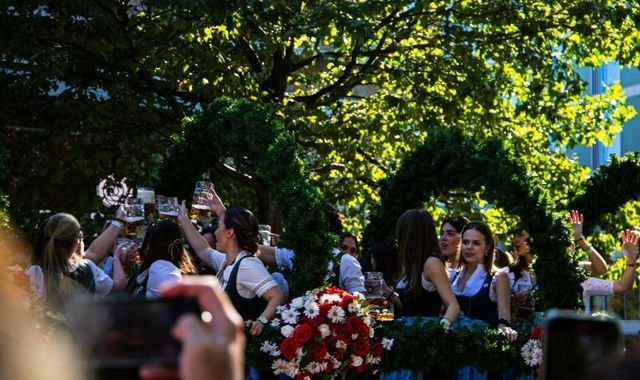The role of the tamada, or toastmaster, is a cornerstone of wedding celebrations in many cultures, particularly in Georgia, where it originated. A tamada is much more than a master of ceremonies; they are the heart of the celebration, weaving together laughter, tradition, and heartfelt emotion through the art of wedding toasts. This guide explores the responsibilities of the tamada, the artistry of crafting memorable toasts, and tips for mastering this unique and cherished role.
The Role of the Tamada
The tamada’s role is both pivotal and intricate. In Georgian weddings, the tamada is often chosen for their eloquence, charisma, and deep understanding of cultural traditions. This individual sets the tone for the entire celebration, ensuring every guest feels included and engaged.
Responsibilities of the Tamada
- Leadership: The tamada guides the sequence of toasts, meals, and entertainment, ensuring the event flows seamlessly.
- Cultural Preservation: Through traditional toasts, the tamada preserves the heritage and values of the community.
- Connection: They act as a bridge between families, uniting the couple’s loved ones with humor, warmth, and wisdom.
- Entertainment: A tamada often incorporates humor, storytelling, and improvisation, turning each toast into a memorable performance.
Crafting the Perfect Wedding Toast
Creating a wedding toast is both an art and a science. The perfect toast strikes a balance between humor and emotion while resonating with the audience. Here’s how a tamada can craft unforgettable toasts:
1. Understanding the Couple
A tamada must deeply understand the couple’s story—their journey, values, and shared dreams. This allows the toastmaster to create toasts that are meaningful and personal.
2. Honoring Tradition
Tradition plays a vital role in the tamada’s toasts. In Georgian culture, for instance, toasts often follow a specific order:
- The first toast is dedicated to peace, a nod to the importance of harmony.
- Subsequent toasts honor parents, ancestors, love, friendship, and the couple’s future.
Incorporating these elements ensures the toast aligns with cultural expectations while evoking a sense of unity and respect.
3. Using Poetic Language
A great toast relies on eloquent and evocative language. Metaphors, similes, and vivid imagery can elevate a simple sentiment into something profound. For instance:
- Instead of saying, “May your love grow,” a tamada might declare, “May your love blossom like the vineyards that stretch across our homeland—everlasting and full of life.”
4. Balancing Humor and Emotion
Laughter and tears are the hallmarks of a successful toast. A tamada might share a lighthearted anecdote about the couple, followed by a heartfelt wish for their future, creating a well-rounded emotional journey for the audience.
Mastering the Art of Delivery
The effectiveness of a wedding toast depends as much on its delivery as its content. A skilled tamada must captivate the audience with presence and poise.
1. Commanding Attention
A tamada’s voice should be clear and confident, with well-timed pauses for emphasis. Eye contact with the audience helps establish a connection, making the toast feel personal.
2. Storytelling Techniques
Engaging storytelling is key. The tamada can use techniques like:
- Chronological Narratives: Sharing the couple’s journey in order.
- Flashbacks: Highlighting a significant moment from the past.
- Surprise Twists: Ending the story with an unexpected but heartwarming conclusion.
3. Improvisation
No matter how well-prepared a tamada may be, adaptability is essential. Reading the room and adjusting the tone or content of a toast to match the mood ensures the celebration remains lively and cohesive.
4. Non-Verbal Cues
Body language, facial expressions, and hand gestures all play a significant role in delivering a memorable toast. Enthusiasm and authenticity should shine through every gesture.
The Challenges of Being a Tamada
Being a tamada is not without its challenges. Managing a diverse audience, balancing traditions, and maintaining energy throughout a long celebration require skill and stamina.
1. Addressing a Diverse Audience
Weddings often bring together guests of varying ages, cultures, and languages. A tamada must ensure their toasts are inclusive and accessible, sometimes incorporating translations or universal themes.
2. Balancing Tradition with Modernity
While respecting traditions, a tamada must also resonate with modern sensibilities. For instance, blending traditional toasts with contemporary references can appeal to younger audiences without alienating older guests.
3. Maintaining Energy
A wedding can last several hours—or even days. The tamada must sustain their enthusiasm and charisma throughout, serving as the celebration’s driving force.
Tips for Aspiring Tamadas
If you’re aspiring to take on the role of a tamada, here are some practical tips to help you excel:
- Practice Public Speaking: Join a local Toastmasters club or participate in public speaking workshops.
- Learn Cultural Traditions: Study the customs and etiquette of the wedding’s cultural context.
- Engage with the Couple: Spend time with the couple to understand their story and preferences.
- Prepare for Flexibility: Be ready to adapt to unexpected changes or challenges during the celebration.
- Invest in Self-Care: Stay hydrated and well-rested to maintain energy throughout the event.
The Legacy of a Tamada
The tamada’s artistry leaves a lasting impression not only on the wedding day but also on the memories of the couple and their guests. A well-crafted toast can become a cherished part of family lore, retold at anniversaries and future gatherings.
By mastering the art of wedding toasts, a tamada not only enhances a couple’s special day but also becomes a guardian of tradition, a storyteller, and a source of inspiration. The role is both an honor and a privilege—a testament to the enduring power of love, unity, and celebration.
In conclusion, the art of tamada is a timeless tradition that celebrates the joy of human connection. Whether you’re stepping into this role for the first time or seeking to refine your skills, embracing the principles of eloquence, empathy, and tradition will help you create unforgettable moments.



